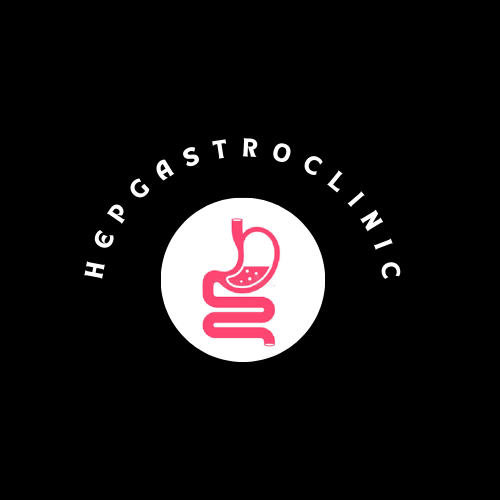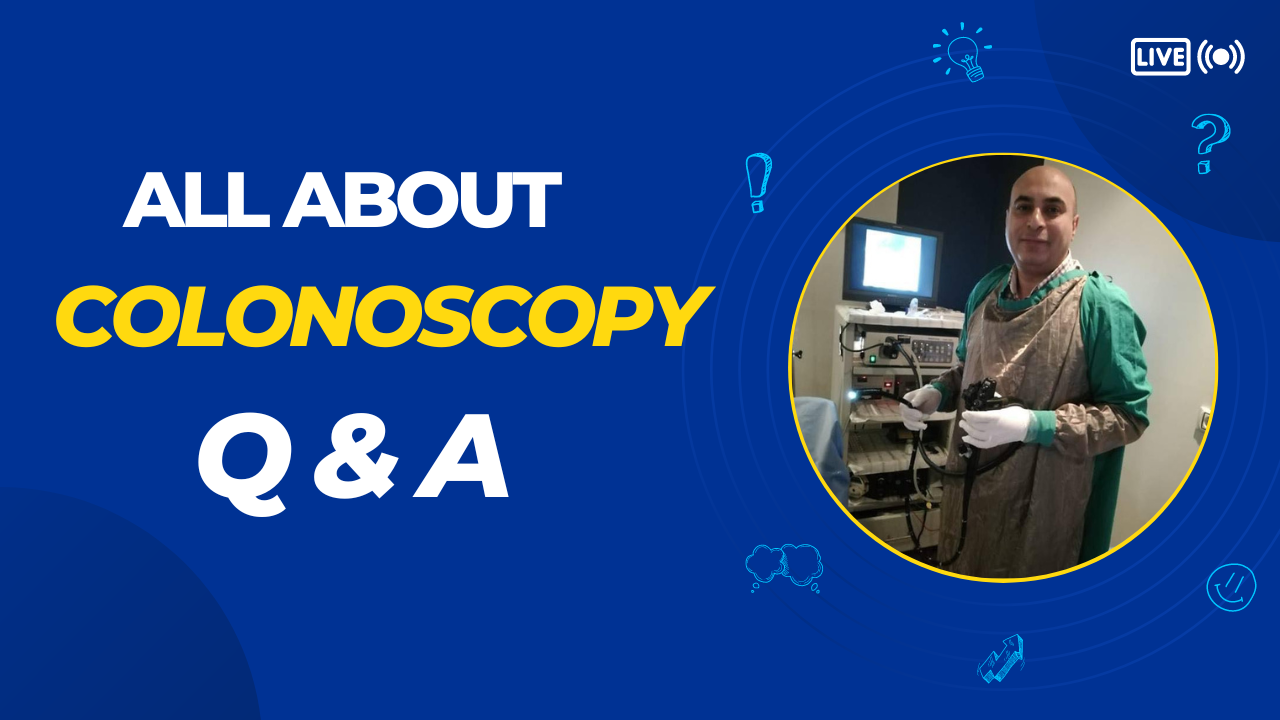Colonoscopy: What it Is, How It's Done, and Benefits vs. risks.
Learn everything you need to know about colonoscopies,
including when they're recommended, who should have one, and what happens
during the procedure.
Colonoscopy: What is it?
It is a thin flexible tube with a camera tip that sends
images to a screen. The endoscope is inserted into the colon from the anus, not
the mouth, like a gastroscope, to examine the mucous membrane lining the colon.
In some cases, we need to enter the small intestine
Is there an alternative to a colonoscopy?
The best colon examination is arguably the colonoscopy for
several reasons:
First: It gives a
direct view of the mucous membrane lining the colon, and we can see the
sufficiency of the minute details and detect any disease, no matter how small
it is.
Second: It is an
advantage of taking a biopsy for analysis of anything that is discovered during
the endoscopy, such as colonic polyps, ulcers, or tumors.
Third: It allows
therapeutic intervention in some cases, such as the resection of a colonic
polyp, for example.
what is the solution if a colonoscopy is not available for one reason in
another?
In this case, we only have a CT scan on the abdomen with dye
or a CT scan on the colon as an alternative to the endoscope, but of course, the
defect of radiology is that it is possible to lose sight of some things,
especially if they are of small sizes Like a small colon polyp or a very small
tumor, for example, and on the other hand, it may give a wrong diagnosis for
the presence of something that is not present, for example, it may indicate the
presence of a polyp in the colon, because the stool may appear on the
radiograph, such as the colonic polyp. Also, it is not possible to take a
sample from the colon through CT.
Colonoscopy: How Does It Work?
There are benefits of getting a colonoscopy and many
diseases that can be diagnosed by colonoscopy, for example, but not limited to
1- Ulcerative colitis and Crohn's disease
2- colonic polyps
3- Colonic diverticula
4- Colon ulcers
5- Anal hemorrhoids
6- colon tumors
7- Vascular malformation
Who determines the patient’s need for a colonoscopy:
The treating physician alone is the one who determines this
based on the patient’s symptoms, clinical examination, and medical
investigations.
Who needs a colonoscopy?
·
Cancer colon is the second
leading cause of cancer. Early detection of colon cancer (colorectal cancer
screening) saves your life. It is preferable in normal people over the age of
50 or if there is a family history of colon cancer. and then a colonoscopy
every 10 years should be repeated.
·
Chronic diarrhea cases
·
Constipation of recent
onset
·
Presence of occult blood in
stool
·
Anemia cases (iron deficiency anemia)
·
anal bleeding
·
Abdominal pain that does not respond to
treatment, especially if it is accompanied by a change in stool or any of the
symptoms mentioned above.
·
Patients with inflammatory
bowel disease should get a colonoscopy at the time of diagnosis and then 10
years later and should be repeated every 2 years to decrease the risk of
colorectal cancer.
What are the types of colonoscopies?
Two types:
Diagnostic colonoscopy:
In it, all parts of
the colon are examined, starting from the anus to the end of the colon, and in some
cases, such as cases of chronic diarrhea, we need to enter the last part of the
small intestine. And if we find anything abnormal during the endoscopy, such as
ulcers, growths, tumors, or inflammation, we can take samples from them to send
them to the pathologist (tissue analysis).
Therapeutic colonoscopy:
Colonoscopies may treat many diseases, such as:
1- Ligation of anal hemorrhoids
2- Remove polyps
3- Cauterization of a vascular malformation to stop the
bleeding.
Colonoscopy Prep: What You Should Do Before the Procedure
The quality of the preparation is the key to the success of
the colonoscopy, because the presence of fecal remnants inside the colon
obstructs the clear vision of the mucous membrane, and things such as a small
colonic polyp may be hidden beneath it. The preparation begins a day before the
endoscopy with complete fasting and only fluid intake. In addition to providing
laxatives to eliminate any stool residues in the colon.
Moviprep is one of the most effective and widely used
laxatives for colonic preparation today.
How to use Moviprep?
Moviprep is a medication used to help clean out your colon
before certain medical procedures. It's important to follow the directions of
your doctor and pharmacist carefully when using Moviprep. Begin by mixing the
contents of each Moviprep pouch with 8 ounces of water, stirring until
dissolved. Next, drink one of the solutions within 15 minutes. Wait for 30
minutes and then drink another liter of clear liquids, such as water or sports
drinks. After an additional two hours have passed, begin drinking the second
Moviprep solution within 15 minutes and finish it within 10-15 minutes. Afterward,
continue to drink clear liquids for at least 2 more hours. Make sure to take
all necessary steps before taking Moviprep to ensure its effectiveness and
safety.
Is a colonoscopy painful?
A colonoscopy is a procedure used to examine the large intestine for any abnormalities. It can be a bit uncomfortable, and patients may experience some mild cramping or bloating, but it should not be considered painful. The doctor will give you medication to help you relax during the procedure, and they will use a thin tube with a light and camera on the end to look inside your intestines. Some people may also experience gas pains after the procedure due to the air that was pumped into the intestine during the exam. Overall, most people do not find it to be a painful experience, but rather an uncomfortable one that is necessary to detect and diagnose any potential health issues.
Risk of Colonoscopy: What is it?
Colonoscopies have both benefits and risks, but the risks do
not outweigh the benefits. Of course, if the endoscopy doctor is competent, the
complications of colonoscopy are not great because each colon patient is
different in terms of length and angles of curvature, which increases the
difficulty of the endoscopy and necessitates skill and training, but the most
serious complications are the occurrence of colonic perforation and its
percentage is not known. It exceeds 0.1% of cases, and it occurs more often in
cases of ulcerative colitis and colonic diverticula, The possibility of colon
perforation may increase to 2% if a therapeutic intervention such as resection
of the colonic polyp is performed. Anal bleeding may also occur after
resection of the colonic polyp, but in all cases, the incidence of these
complications is extremely low. So, talk with your doctor about the possible
risks according to your medical condition.
Does the endoscope transmit infection?
The colonoscope does not transmit infection if it is
properly sterilized from the inside and outside and for not less
than 20 minutes between one case and another.
Will I need to be hospitalized after the endoscopy?
The greatest benefit of undergoing routine colonoscopies is that you are screened for colon cancer. While you may worry about the possibility of needing to be hospitalized after a colonoscopy, this is actually very rare. In general, when people undergo a colonoscopy they can expect fewer complications and should not need to be hospitalized afterward. Of course, there are some cases where a patient may need additional medical care or further treatment, but these cases are relatively uncommon as many people experience no major issues during or after the procedure.
Will I feel tired after the colonoscopy?
It is normal to feel tired after a colonoscopy. The procedure itself can be quite tiring and the medications used during it can make you drowsy as well. Additionally, the procedure may require you to lie on your side for an extended period and this in itself can be tiring. It is important to take it easy after a colonoscopy and allow yourself enough rest and recovery time. Depending on the medications used during your procedure, you may experience some side effects such as nausea, vomiting, or headache that can also cause fatigue. It is important to follow up with your doctor if these symptoms persist or if you are feeling unusually tired after the colonoscopy.
What are the complications that need attention if they occur after the
endoscopy?
1- An increase in temperature
2- severe abdominal pain
3- vomiting
4- Blood in stool or black stool
If any of the above
symptoms occur, a doctor should be consulted immediately.
Are there any special food and drink instructions after the endoscopy?
After the diagnostic colonoscopy, you can eat and drink
immediately as soon as you regain consciousness.
As for the therapeutic endoscope, there are instructions for
food and drink according to the type of each endoscope.
Colonoscopic examination price 2022:
There is no fixed price for a colonoscopic procedure, as the
price of any endoscope depends on several factors, the most important of which
are the difficulty of the endoscopy, the efficiency of the endoscopy doctor,
and the capabilities of the endoscopy center such as sterilization, providing
anesthesia and other endoscopy requirements. For a biopsy, polypectomy, or
others, of course, the cost of the endoscope will rise.
Conclusion:
Colonoscopy is an excellent way to diagnose most colon
problems and screen for cancer colon and it is considered a very safe method.
I hope that I have succeeded in answering all your questions
regarding everything related to colonoscopy, and of course, I am waiting for
your participation on this topic, now I will leave you with a video about
irritable bowel.

